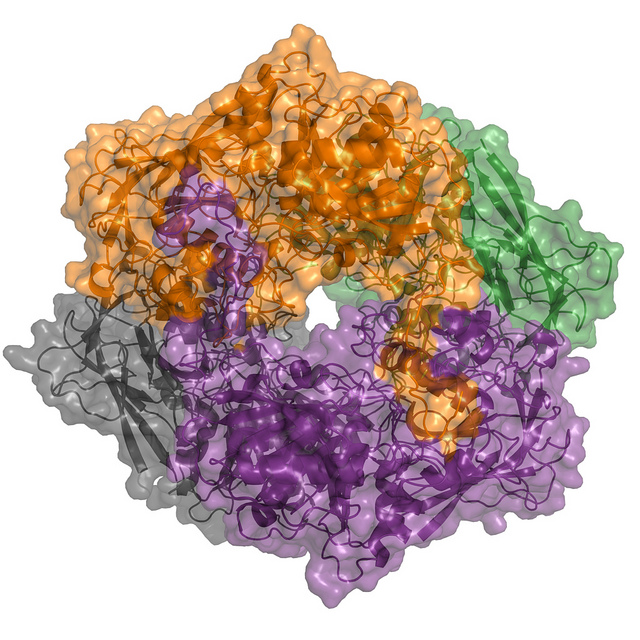Archaeal Enzyme Plays Key Role in Atmospheric Carbon Turnover
06/10/2015

The crystal structure of bathyaminopeptidase (BAP), a protein that enables marine archaea to release carbon, helped determine how the enzyme functions and its larger role in carbon cycling in marine sediments. [Credit: K. Michalska, et al. (2015) The FASEB Journal, DOI: 10.1096/fj.15-272906.]
The Summary
Researchers from the U.S. Department of Energy’s Argonne National Laboratory and the University of Tennessee found that microorganisms called archaea living in marine sediments use completely novel enzymes to break down organic matter into carbon dioxide.
Scientists are uncertain how fast archaea process carbon and whether the release is accelerating. Once researchers have these statistics, they may find ways to better predict the environment’s response to a changing climate.
This understanding starts at the molecular level. Using resources at the Advanced Photon Source, a DOE Office of Science User Facility, and the Advanced Protein Characterization Facility, the research team isolated and crystallized bathyaminopeptidase (BAP), one of the enzymes found in the archaea, to look into its structure and observe how it operates. They found that BAP plays an important role in breaking down proteins and, consequently, the turnover of atmospheric carbon.
Funding
Work supported by U.S. National Institutes of Health’s (NIH) National Institute of General Medical Sciences (NIGMS) Grant GM094585 (to A.J.); Office of Biological and Environmental Research (OBER), U.S. Department of Energy (DOE) Office of Science, under Contract DE-AC02-06CH11357 (to A.J.); and Center for Dark Energy Biosphere Investigations Grants 157595 (to K.G.L.) and 36202823 (to A.D.S.). Work is Center for Dark Energy Biosphere Investigation Contribution 268. Submitted manuscript created by University of Chicago, Argonne, LLC, operator of ANL. ANL, a DOE Office of Science laboratory, which is operated under Contract No. DE-AC02-06CH11357.
Related Links
- BER Resource: Structural Biology Center
- Feature Story: Closer look at microorganism provides insight on carbon cycling
References
Michalska, K., Steen, A.D., Chhor, G., Endres, M., Webber, A.T., Bird, J., Lloyd, K.G. and Joachimiak, A. (2015), New aminopeptidase from “microbial dark matter” archaeon. The FASEB Journal, 29: 4071-4079. DOI: 10.1096/fj.15-272906
